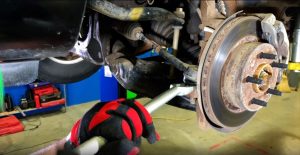
The auto repair industry is undergoing a transformation driven by technological advancements. These innovations are reshaping how repairs are diagnosed, executed, and managed. This article explores the key technological trends revolutionizing auto repair.
· Advanced Diagnostic Tools
Modern vehicles are equipped with complex computer systems and sensors that monitor their performance. These systems generate a wealth of data that can be accessed through advanced diagnostic tools.
Unlike traditional methods that relied on manual inspections, today’s tools can quickly identify issues by reading fault codes and system statuses. This capability allows for faster and more accurate diagnoses, reducing repair times and costs.
· The Role of Artificial Intelligence
Artificial Intelligence (AI) is making significant inroads into the auto repair sector. AI-driven diagnostic systems can analyze data patterns and predict potential issues before they become serious problems.
These systems learn from each repair, continuously improving their accuracy. Additionally, AI can assist in managing inventory, scheduling maintenance, and even suggesting repair solutions, making the entire process more efficient.
· Augmented Reality in Repairs
Augmented Reality (AR) is emerging as a powerful tool in auto repair. AR technology overlays digital information onto the physical world, providing technicians with real-time guidance during repairs.
For example, AR glasses can display step-by-step instructions or highlight specific parts that need attention. This technology enhances precision and reduces the likelihood of errors, especially in complex repairs.
· Connectivity and Remote Diagnostics
The rise of connected vehicles has paved the way for remote diagnostics. Cars equipped with Internet of Things (IoT) sensors can communicate directly with repair shops, transmitting data about their condition.
This connectivity allows for real-time monitoring and early detection of issues, enabling timely maintenance. It also facilitates remote diagnostics, where technicians can assess problems without the vehicle being physically present at the shop.
· Electric and Hybrid Vehicle Challenges
The shift towards electric and hybrid vehicles introduces new challenges and opportunities for the auto repair industry. These vehicles require specialized knowledge and equipment for maintenance and repairs.
Technicians need to be trained to handle high-voltage systems and understand the intricacies of electric drivetrains. Repair shops are adapting by investing in the necessary tools and training to service these vehicles effectively.
· The Rise of Mobile and On-Demand Services
Convenience is a significant factor driving change in auto repair services. Mobile repair units and on-demand services are becoming more popular. These services bring the repair shop to the customer, providing a more flexible and time-saving option. For residents seeking auto repair in Salt Lake City, UT, such services offer the convenience of professional repairs without the need to visit a physical shop.
· The Importance of Software Updates
As vehicles become more like computers on wheels, software updates play a crucial role in their maintenance. Manufacturers regularly release updates to improve performance, fix bugs, and enhance safety features.
Keeping the vehicle’s software up-to-date is essential for optimal functioning. This trend emphasizes the need for repair shops to stay current with the latest software tools and protocols.
Conclusion
Technology is revolutionizing the auto repair industry, making it more efficient, accurate, and customer-friendly. From advanced diagnostics and AI to augmented reality and mobile services, these innovations are transforming how vehicles are maintained and repaired.
As the industry continues to evolve, staying abreast of these technological trends is essential for both repair shops and vehicle owners. Whether in Salt Lake City, UT, or anywhere else, the future of auto repair promises to be exciting and filled with opportunities.








